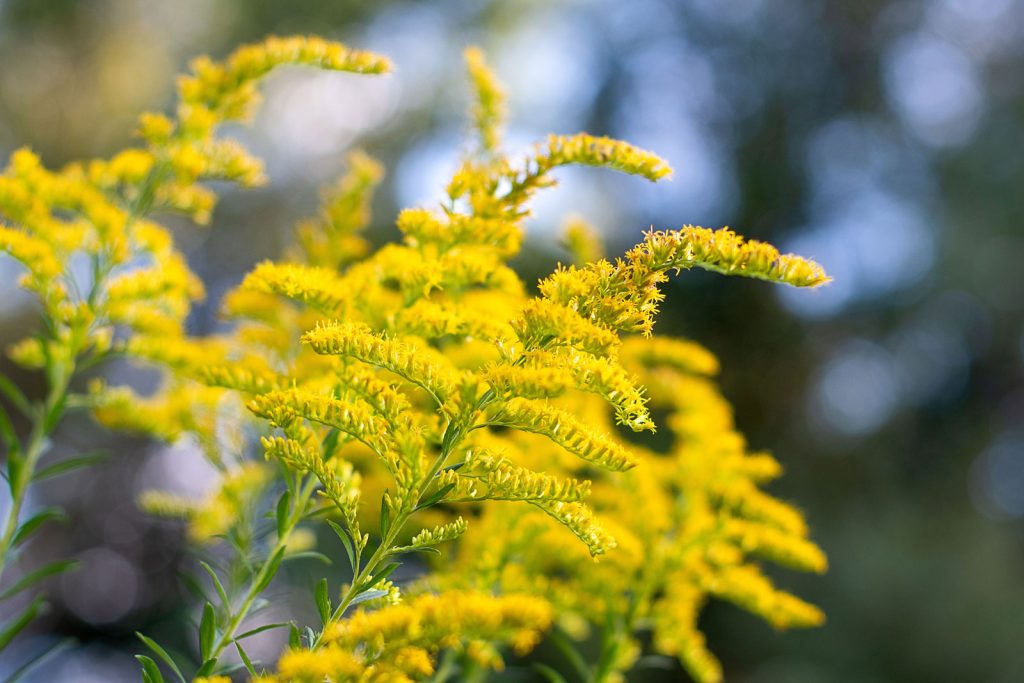
As autumn begins to set in, one native wildflower stands out as a beacon of vibrant color and ecological significance: goldenrod. With its brilliant yellow plumes and rich history, goldenrod is a beloved symbol of the fall season in North America.
The Many Faces of Goldenrod:
Goldenrod is not a single species but a diverse genus that boasts over 100 different species native to North America. These species vary in appearance, from the tall and stately Canada goldenrod to the feathery, delicate blooms of stiff goldenrod. Each variety has its unique charm, contributing to the rich tapestry of colors in autumn landscapes.
Goldenrod typically bursts into bloom in late summer and early fall, providing a stunning display of bright yellow or golden flowers as the landscape transitions into autumn hues. Right now, goldenrod is in full bloom, gracing meadows, roadsides, and gardens with its vibrant presence.
Wildlife and Pollinator Benefits:
One of the most crucial roles of goldenrod in our ecosystem is its support for wildlife and pollinators. As many plants and flowers begin to wither in the fall, goldenrod steps in as a critical nectar source. Bees, butterflies, and other pollinators flock to its blossoms, building up their reserves for the winter months. Some goldenrod species even serve as host plants for caterpillars, further enhancing their value to local ecosystems.
Goldenrod and Soil Health:
Goldenrod doesn’t just provide beauty and sustenance to wildlife; it also plays a significant role in soil health. Its deep, fibrous root system helps stabilize soil and prevent erosion. Goldenrod is also known for its ability to thrive in various soil types, making it a valuable species for restoring disturbed or degraded areas.
Goldenrod’s roots reach deep into the earth, mining nutrients and improving soil structure. They also contribute to the accumulation of organic matter, enhancing soil fertility and moisture retention.
The next time you encounter a field of goldenrod in full bloom, take a moment to appreciate the ecological importance of this native wildflower, a symbol of both the season and the beauty of our natural world.
